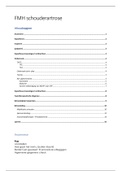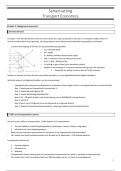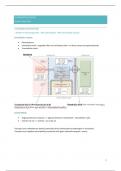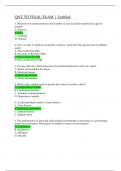Professional English: Unit 13 t/m 24 (Eng – Eng)
Oxford English Unit 4 t/m 6 (Eng – NL)
INHOUD
Professional English in use – Finance ...................................................................................................................... 2
Unit 13: The Balance Sheet 3 - Liability ............................................................................................................... 2
Unit 14: The other financial statements ............................................................................................................. 2
Unit 15: Financial ratios 1.................................................................................................................................... 3
Unit 16: Financial ratios 2.................................................................................................................................... 3
Unit 17: Cost Accounting ..................................................................................................................................... 4
Unit 18: Pricing .................................................................................................................................................... 4
Unit 19: Personal banking ................................................................................................................................... 5
Unit 20: Commercial and retail banking.............................................................................................................. 5
Unit 21: Financial institutions ............................................................................................................................. 6
Unit 22: Investment banking ............................................................................................................................... 6
Unit 23: Central banking ..................................................................................................................................... 7
Unit 24: Interest rates ......................................................................................................................................... 7
Oxford English for careers – Finance 1.................................................................................................................... 8
Key words Unit 4: Economic indicators ............................................................................................................... 8
Key words Unit 5: Economic cycles ..................................................................................................................... 8
Key words Unit 6: Economic sectors ................................................................................................................... 9
Writing a report .................................................................................................................................................... 10
Format ............................................................................................................................................................... 10
Language bank .................................................................................................................................................. 10
Pronunciation ........................................................................................................................................................ 11
1
, PROFESSIONAL ENGLISH IN USE – FINANCE
UNIT 13: THE BALANCE SHEET 3 - LIABILITY
Long-term liabilities (Non-current liabilities) Money that the company owes over a long term.
Current liabilities Liabilities expected to be paid within a year of the date of the balance sheet.
Includes:
• Creditors = Largely suppliers of goods or services to the business who are
not paid at the time of purchase.
• Planned dividends.
• Deferred taxes = Money that will have to be paid as tax in the future,
although the payment does not have to be made now.
Accrued expenses Expenses that are built up or increased over a period of time.
-> charged against income (deducted from profits)
Shareholders’ equity Money belonging to the shareholders and not the company. Includes:
• Original share capital.
• Share premium = money made if the company sells shares at above their
face value (the value written on them).
• Retained earnings = profits from previous years that have not been
distributed to shareholders.
• Reserves = funds set aside from share capital and earning, retained for
emergencies or other future needs.
UNIT 14: THE OTHER FINANCIAL STATEMENTS
Profit and loss account Financial statement that shows the difference between the revenues and
expenses of a period.
Income and The “profit and loss account” for non-profit organizations.
expenditure account
Surplus In case of more income than expenditure (called a surplus rather than a profit).
Total sales revenue (or Total amount of money received during a specific period. OMZET
turnover)
Cost of sales (cost of costs associated with making the products that have been sold (raw materials,
goods sold, COGS) labour and factory expenses).
Gross profit Difference between sales revenue and cost of sales
Selling, general and Other expenses that have to be deducted from gross profit. (Such as: rent,
administrative electricity and office salaries)
expenses (SG&A)
EBITDA Earnings before interest, tax, depreciation and amortization. (Last two can vary
depending on which system a company uses)
EBIT Earnings before interest and tax.
Net profit (bottom Profit after all the expenses and deductions. This can be distributed as dividends
line) or transferred to reserves.
Cash flow statement Statement that gives details of cash flows (money coming into and leaving a
or business). This relates to:
(funds flow statement)
• Operations = day-to-day activities
or
• Investing = buying or selling property, plant and equipment
(source and application
• Financing = issuing or repaying debt, or issuing shares
of funds statement)
2













